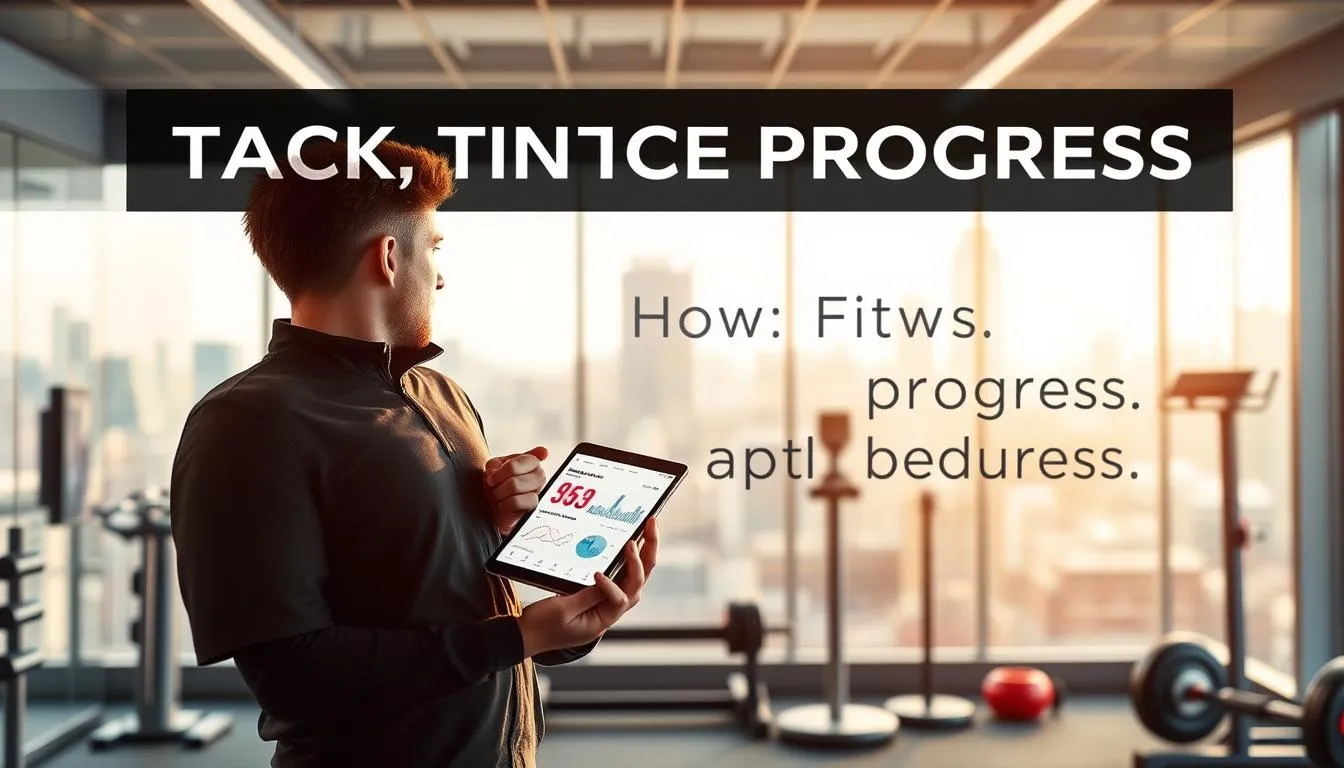Did you know that short, themed fitness campaigns can lift member engagement by double-digit percentages in just one month?
Running a shareable, short-term challenge turns regular workouts into memorable moments members want to post about. Pairing in-club sessions with home options and wearables like Fitbit or Apple Watch makes participation easy for everyone, and consider exploring app-based fitness gamification for additional techniques.
Simple formats — a 30-day plank progression, step leaderboards, or hydration streaks — give clear goals and measurable milestones. That clarity boosts retention and builds camaraderie as members celebrate weekly wins, and consider exploring proven motivation techniques for additional techniques.
Prizes and visible results — free months, guest passes, or branded apparel — reward effort and create proof that inspires others. For more examples and setup tips, see fitness challenge ideas.
Key Takeaways
- Short, themed campaigns keep participants motivated without burnout.
- Combining in-club and at-home options increases overall participation.
- Wearables and simple tracking make progress visible and measurable.
- User posts and testimonials act as powerful referrals.
- Rewards and weekly recaps sustain momentum through the challenge.
Why social media gym challenges work right now
Short, timed fitness programs create urgency and turn casual visits into committed routines. A clear start date, simple goals, and visible tracking make it easy for members to join and stick with a plan.
Boost engagement and keep members motivated
Urgency and accountability push people to attend on time and complete each workout. Weekly tasks and small recognition—like leaderboard shout-outs—give steady boosts.
Increase retention with routine and accountability
Routine-focused formats rebuild habits. Attendance-driven formats reduce churn by turning sporadic visits into a reliable schedule.
Clear timelines and tracking instructions lower friction so participants feel confident from day one.
Turn member progress into marketing gold
Progress photos and short reels act as authentic proof that drives interest in membership. Hybrid models let members attend classes in person and log results online for flexibility.
Collect quick before/after metrics, spotlight top stories, and reward milestones to keep momentum and show real results.
Social media gym challenges
Thirty days of progressive moves make it easy for members to track wins and encourage each other. Use short, daily prompts so posting feels quick and fun, and consider exploring quick micro-workout challenges for additional techniques.

Thirty-day plank series with progress posts and variations
Start with a baseline hold and add side planks, alternating-arm/leg holds, and timed progressions. Ask members to post a daily clip or photo to show form and improvement.
Step count leaderboard with weekly reels and shout-outs
Sync wearables for a fair leaderboard. Share weekly reels that highlight top movers, creative routes, and member stories to keep the group excited.
Healthy eating and hydration streaks with daily stories
Invite participants to post short stories of water intake and balanced meals. Offer simple prompts and a starter content kit so sharing stays easy.
Personal best progression posts
Have members log a lift, run time, or AMRAP score and aim to beat it by month-end. Set clear rules—rep schemes, time caps, or distance targets—so every comparison is fair.
Holiday-themed events with branded hashtags
Try a “Turkey Trot” or “12 Days of Fitness” with a single hashtag to unify posts. Encourage buddy tags and small teams for friendly competition and added accountability.
- Simple rules: reps, time caps, or distances for fairness.
- Weekly highlights: spotlight effort, form, and creative posts.
- Month-end recap: compile a reel of top moments and personal bests to close the campaign.
Virtual fitness and hybrid participation made simple
A single app that links wearables and on-demand classes makes participation easy when plans change. Member apps let people toggle between in-club and at-home sessions. That flexibility keeps members active during travel or busy weeks.
Use member apps and wearables to track workouts in real time
Connect trackers to automate logs. When devices record steps, heart rate, or calories automatically, it is simple to track progress and update leaderboards.
Offer on-demand classes and remote check-ins for flexibility
Provide short video check-ins or photo proof for strength entries so scoring stays fair across locations. Set clear submission windows by time zone to keep every participant on equal footing.
| Feature | Benefit | Example | Requirement |
|---|---|---|---|
| Wearable sync | Automatic logs, less manual entry | Calorie-burn tracker updates treadmill and bike totals | Member app + device permission |
| On-demand library | Attend anytime, keeps attendance steady | Recorded classes for travel days | Clear class labels (length, intensity) |
| Remote check-ins | Consistent scoring across locations | Short video proof of a lift or form | Standard data: session length, modality, est. calories |
| Weekly support | Troubleshoot tech, boost accountability | Virtual office hours Q&A | Opt-in privacy settings |
Give members downloadable progress cards and story stickers to make posting fast. Add clear privacy controls so people feel safe sharing metrics in the app. These steps help participants stay engaged and finish the challenge strong.
Challenge ideas by fitness level to include every member
Design tiered challenge tracks so every member finds a clear, achievable path.

Beginner-friendly options
Keep the start simple. Offer attendance streaks like “show up 3x/week” and daily 7-minute workout circuits to lower the barrier to entry.
Include gentle flexibility sessions with short video guidance to protect muscle health and reduce injury risk.
Intermediate tracks
Build training with squat volume, sit-up ladders, or cycling distance goals. Set weekly targets and encourage steady progress.
Use short daily structures so participants can fit work in during busy days and still see gains.
Advanced options
Provide challenging formats: a burpee century progression, a pull-up ladder, or a 5K month build with pace targets.
Allow upgrades or downgrades mid-plan and recommend rest-day recovery tips to support long-term results.
| Level | Example | Weekly target | Recovery tip |
|---|---|---|---|
| Beginner | 3x/week attendance; 7-min circuits; flexibility vids | 3 sessions or 7 daily minutes | Light stretching, 1 rest day |
| Intermediate | Squat volume ladder; sit-up sets; cycling miles | Progress 10% each week | Foam roll, active recovery |
| Advanced | Burpee century; pull-up ladder; 5K build | Increase intensity or distance weekly | Contrast baths, targeted muscle care |
Tip: Start every campaign with a quick movement screen so each member selects the right level. Invite group sign-ups to boost accountability and keep participants motivated.
Build community with group formats and friendly competition
When people work toward a common total, small contributions add up and drive lasting camaraderie.
Team relays and class-based matchups turn individual miles or meters into a shared goal. Design relays so every participant adds a short segment—running, rowing, or cycling—to the team total.
Run class-versus-class events for cycling, HIIT, or yoga cohorts. Score points for attendance, improvement, and teamwork so the focus stays on growth as well as rivalry.
Public leaderboards and in-app engagement
Publish weekly leaderboards that celebrate consistency, not just the top finishers. Add shout-outs, comments, and quick reactions to spotlight effort.
| Format | How it works | Member benefit |
|---|---|---|
| Team relay | Shared miles/meters; everyone logs short segments | Inclusive wins and shared momentum |
| Class contest | Classes earn points for attendance and gains | Boosts cohort identity and retention |
| Weekly leaderboard | Rank by consistency, improvement, sportsmanship | Recognition across all members |
Keep members engaged by rotating formats, offering mini-prizes, and giving captains prompts for pep talks and playlists. Clear rules and quick check-ins help everyone feel seen and supported.
How to track progress and showcase results
Pick measurable targets up front so every participant knows how success is judged.
 Define clear metrics—calories, reps, distance, time, or body composition—so members know what to log. Use equipment readouts and wearable sync when possible to reduce manual entry.
Define clear metrics—calories, reps, distance, time, or body composition—so members know what to log. Use equipment readouts and wearable sync when possible to reduce manual entry.
Practical frameworks that scale
Try a 30-day plank plan with daily targets and weekly form video checks. A month-long step goal that pulls wearable totals works for many members.
Add AMRAP cycles for short, intense training sessions that let participants chase a personal best without long commitments.
Set the period and reporting windows
Clarify start and end dates, submission windows, and standard equipment settings to avoid disputes. Share weekly recaps that highlight totals and standout wins.
- Baseline and finale check-ins help members visualize results even if they don’t top leaderboards.
- FAQ and privacy notes explain screenshot rules and what data is public versus private.
Content calendar ideas to keep members posting
A clear content calendar helps people share wins without guessing what to post each day. Set a simple weekly rhythm so members know what to capture and when.
Short prompts and repeatable themes make posting easy. Try “Form Tip Monday,” “Midweek Win,” and “Friday Flex” so people can plan one quick clip or photo each day.
Weekly prompts, UGC spotlights, and branded hashtag strategy
Create UGC spotlights that feature diverse members. Seeing real people boosts confidence and helps more folks join the challenge.
- Publish a weekly prompt calendar to guide daily posts.
- Use one primary branded hashtag plus two short secondary tags for discoverability.
- Share caption starters and camera tips so new posters feel comfortable.
- Encourage quick workout clips that show effort, not perfection.
- Close each week with a highlight reel that stitches top moments together.
Keep members involved by adding polls, tagging prompts, and a clear repost policy. These small steps increase reach and make the group feel like a real community.
Rewards, incentives, and partnerships that motivate
Well-designed rewards turn participation into long-term habit by making progress feel visible and valued. Offer incentives that appeal to different members so more people sign up and stay active.
Mix marquee prizes with frequent small wins. Big items—like a free month of membership or branded apparel—create buzz. Smaller perks keep momentum between big draws.
Prize types that work
- Marquee rewards: free month membership, apparel, or add-on service discounts to motivate sign-ups.
- Invite boosters: guest passes so winners bring friends to classes and expand reach.
- Tiered awards: participation, consistency, and improvement levels so more participants can win.
Partnerships and charity tie-ins
Partner with local sponsors for gift cards or product prizes. Align a portion of totals—miles or reps—with donations to a cause. This adds purpose and draws extra attention.
Keep rules clear: spell out the amount needed for each tier and how winners are chosen. Spotlight partners in weekly recaps and offer a member’s choice award to celebrate positivity.
- Balance big prizes with frequent shout-outs and small rewards to sustain energy.
- Use guest pass redemptions as a follow-up path for new leads.
- For more creative incentive ideas, see fitness incentive programs.
Safety, accessibility, and health considerations
Clear safety steps reduce risk and make the plan welcoming for members at every level. Start every day with a short, dynamic warm-up and finish with a cool-down to protect joints and muscles.
Warm-ups, scaling, and clear disclaimers
Provide simple scaling options. Offer beginner, intermediate, and advanced variants for each exercise so people can join confidently without overreaching.
- Warm-up & cool-down: require a brief dynamic warm-up and mobility or flexibility routine each session.
- Form education: short videos and cue cards explain safe technique for high-volume exercise and complex lifts.
- Training frequency: set rest-day guidance to prevent overload during the challenge period.
- Equipment safety: post visible setup instructions for racks, benches, and cardio machines.
- Health notes: include a clear participation disclaimer advising members to consult healthcare providers or trainers when needed.
Encourage people to report discomfort early and modify rather than push through pain. Train staff to spot red flags and step in with form checks or alternatives so participants finish stronger and healthier.
Conclusion
Conclusion
Simple, timed fitness challenges help people set clear goals and celebrate wins together. Well-planned fitness challenges are a great way to energize gym members, boost retention, and spread word-of-mouth.
Mix formats—attendance streaks, step goals, AMRAPs, and personal best focuses—to reach different fitness level needs. Keep time windows short (two to four weeks or a month) and provide a small toolkit: rules, tracking steps, a content plan, and prize tiers.
Close each fitness challenge with a recap reel that highlights participants, weight loss or strength wins, and next steps. Offer flexible options and virtual fitness links so more people can join. Pick one simple gym challenge to launch this month and iterate from feedback.
FAQ
What are the best types of online fitness challenges to run right now?
Short, focused formats work best—30-day plank progressions, step leaderboards, and personal-best posts for strength or run times. Mix in healthy eating streaks and holiday-themed events to keep variety and sustain participation.
How do these challenges boost engagement and keep members motivated?
Challenges create routine, accountability, and visible progress. Daily prompts, progress posts, and public leaderboards spark friendly competition and encourage members to return more often, improving retention and results.
How can I include remote participants and make challenges hybrid-friendly?
Use member apps and wearables to collect real-time data, offer on-demand classes, and schedule remote check-ins. Clear tracking and simple submission methods let both in-person and virtual participants join equally.
What metrics should I track to measure success?
Define clear metrics like reps, distance, time, calories, and body composition. Use consistent frameworks—daily streaks, weekly leaderboards, or month-long goals—so progress is measurable and comparable.
How do I design challenges for different fitness levels?
Offer scaled options: beginner-friendly attendance streaks, 7-minute workouts, and flexibility routines; intermediate squat, sit-up, or cycling targets; advanced challenges like burpee sets, pull-up ladders, or a 5K build.
What incentives work best to increase participation?
Practical rewards resonate: a free month, branded apparel, service discounts, or guest passes. Partnering with local businesses or charities adds value and motivates higher turnout.
How can I safely encourage members to push for personal bests?
Emphasize warm-ups, proper scaling, and form demos. Provide clear disclaimers and encourage members to track progress gradually. Offer coaching or classes focused on technique to reduce injury risk.
What content ideas help keep members posting and engaged?
Use a content calendar with weekly prompts, user-generated content spotlights, branded hashtag campaigns, and short reels or stories showcasing progress. Feature success stories and milestone shout-outs to maintain momentum.
How do I turn member progress into marketing content?
Highlight before-and-after posts, personal-best videos, and leaderboard shout-outs (with consent). Share testimonials and progress snapshots to attract new members and demonstrate community energy.
How do I track participation and results without manual work?
Integrate tracking tools like apps and wearables, use automated forms for check-ins, and leverage class booking systems. Public leaderboards and weekly summaries reduce admin while keeping transparency.
What formats build the strongest sense of community?
Team relays, class-based competitions, and group milestones foster camaraderie. Encourage comments, reactions, and small-group check-ins to deepen connections and support.
How long should a challenge run to deliver real results?
Pick a timeframe tied to the goal: days for quick boosts, weeks for habit formation, and a month for measurable fitness changes. Thirty-day formats often balance momentum with achievable progress.
How can I ensure accessibility for all members?
Provide scaled versions of movements, offer alternatives for common limitations, and include clear instructions. Make digital content captioned and easy to follow for different ability levels.
Are there legal or health considerations when running public contests?
Yes—use participation disclaimers, obtain consent for sharing posts, and follow local rules for promotions. Encourage medical clearance for high-intensity activities and include safety guidelines.
